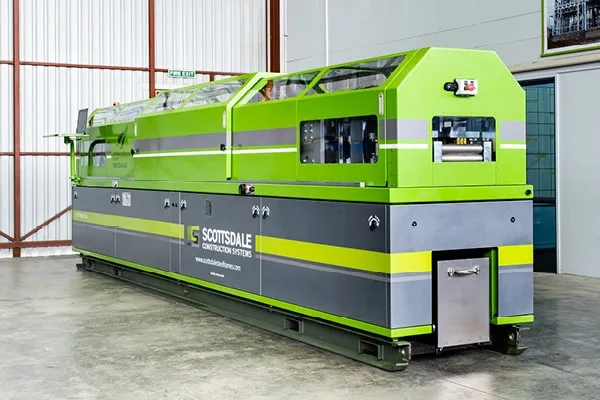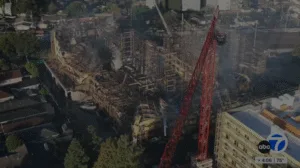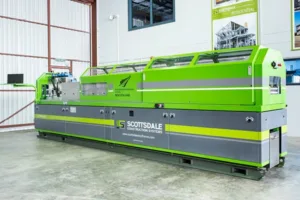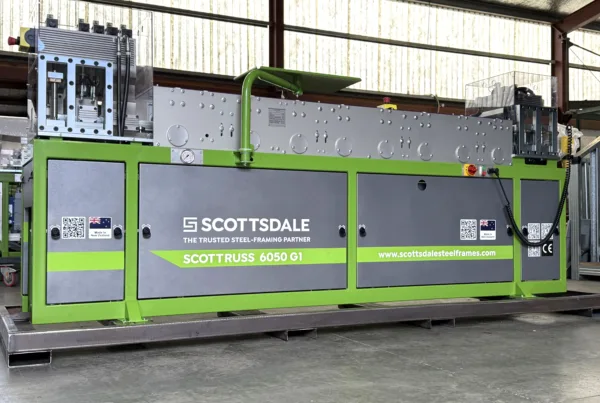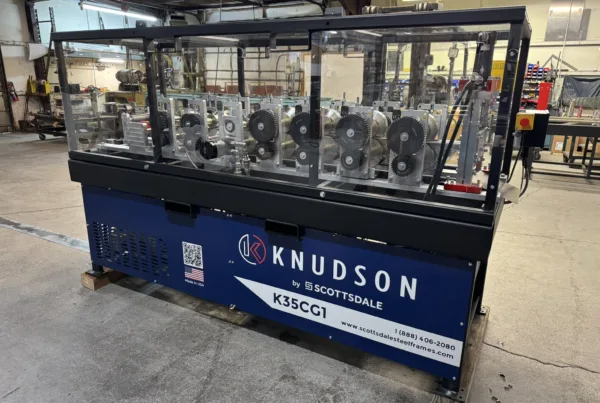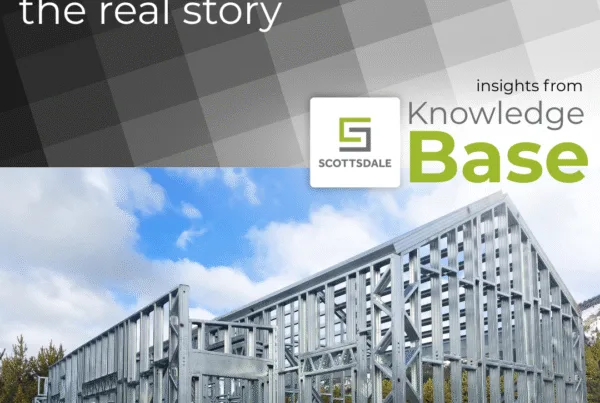Building with steel framing is not only about strength, speed, and sustainability; it also brings significant insurance savings. Whether you’re planning a residential home, a commercial facility, an industrial complex, or a multi-story structure, choosing to build with cold-formed steel reduces risks that insurers factor into their rates. Thanks to the durability of steel framing material and the precision of modern steel framing machines, builders and property owners are seeing real financial benefits through lower insurance premiums. As the construction industry evolves, more insurance companies are acknowledging the reduced fire, weather, and long-term performance risks of steel construction, opening opportunities for cost-effective coverage.
Why Steel Framing Material Reduces Risk?
Insurance companies base premiums on risk. Traditional wood construction increases the potential for fire, pests, and rot, driving up rates. By contrast, steel framing material is noncombustible, does not warp or rot, and resists mold and termites. When you build with cold-formed steel, you eliminate many of the risks that trigger higher claims. This directly translates into insurance savings across multiple insurance policy categories.
In fact, case studies show builders are saving hundreds of thousands of dollars on builders’ risk insurance simply by switching to steel framing. These results demonstrate how insurers are beginning to reward safer construction practices with lower insurance premiums.
Builders Risk Insurance Savings with Steel Framing
One of the most direct areas of benefit is builders’ risk insurance. During the construction phase, fire is one of the biggest threats to a project. Wood structures remain vulnerable until they are completed and protected by active fire suppression systems. A project that uses steel framing material, however, dramatically lowers that risk.
Building with wood comes with significant risks during construction. Until completion, wood-framed projects remain open and unprotected, making them highly vulnerable to fire, weather, rain, and other hazards. This vulnerability is amplified in harsh climates where high winds and elevated fire risk accelerate the spread of flames and debris. A recent example underscores the point: a $155 million affordable housing development in Redwood City, California, was just months from completion when it caught fire. In only three hours, the entire project (nearly 180 units) was reduced to rubble. The total loss highlights why builders risk insurance on wood structures carries such high premiums.
Image source: abc7news
By contrast, choosing to build with cold-formed steel dramatically reduces these risks. Steel framing material is noncombustible, does not fuel fire spread, and stands strong against wind, pests, and decay. Supported by modern steel framing machines, steel projects deliver precision, safety, and durability from day one, creating safer jobsites and unlocking real insurance savings through consistently lower insurance premiums.
Recently, a large multifamily project in California saved approximately $400,000 in builders’ risk insurance by opting to build with cold-formed steel. This type of evidence has encouraged insurers in states like California, Texas, Florida, and Indiana to offer tailored programs for builders using steel framing machines and steel-based systems. Learn more about this project at Steel Framing Alliance – Fighting Fire with Steel Fire Resistance 101.
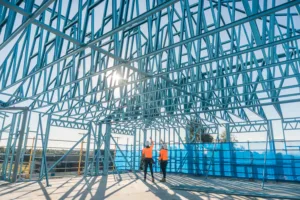
Lower Insurance Premiums for Homeowners and Developers
The benefits extend beyond the construction phase. Once occupied, buildings constructed with steel framing qualify for long-term insurance savings. Homeowners in hurricane-prone regions and developers managing multi-story commercial properties alike are discovering that steel’s durability against fire, wind, and seismic activity leads to measurable reductions in premiums.
When insurers recognize that a building framed with steel framing material is less likely to incur catastrophic loss, they respond with lower insurance premiums. The ripple effect benefits homeowners, tenants, and developers alike.
How Steel Framing Machines Deliver Complete Building Solutions
Modern steel framing machines do more than produce wall panels and trusses; they enable the fabrication of a complete building envelope. Every component, from wall panels and floor joists to roof trusses and even complex architectural elements, can be designed and manufactured using steel framing material. This integrated capability means that a project can be fully built with cold-formed steel, ensuring uniform quality across the entire structure.
Unlike traditional methods, where customization often comes with added costs, steel framing machines allow for precise, project-specific customization without inflating the price tag. Openings for windows, doors, and services can be engineered directly into the design and roll-formed into the steel members. As a result, builders receive ready-to-assemble components that fit perfectly, reduce waste, and eliminate costly on-site modifications.
This end-to-end precision translates into more than just efficiency; it directly supports insurance savings. Buildings that are fabricated and assembled with exacting accuracy have fewer risks of structural errors or failures, and when you build with cold-formed steel, you’re creating an envelope that insurers recognize as resilient, noncombustible, and durable. From start to finish, the advanced automation behind steel framing machines reinforces a safety and performance profile that leads to consistently lower insurance premiums.
Who Benefits Most from Insurance Savings?
Homeowners: Lower fire risk means reduced premiums on home insurance.
Developers: Builders of multifamily housing or commercial properties see significant insurance savings during construction and beyond.
Industrial operators: Warehouses and factories gain protection against long-term hazards such as pests, mold, or fire damage.
Community planners: In disaster-prone regions, choosing to build with cold-formed steel not only strengthens resilience but also cuts costs on coverage.
Investors: Reduced construction risks and lower insurance premiums improve project profitability and long-term returns, making steel-based projects more attractive and financially stable for investors.
The consistent theme is that switching to steel framing provides measurable financial rewards through lower insurance premiums, while also delivering safer, more durable buildings.
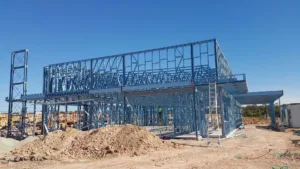
Building Smarter with Steel Framing Solutions
Choosing steel framing material over wood doesn’t just strengthen a building’s structure; it strengthens its financial outlook. From the construction site to long-term occupancy, the combination of fire resistance, durability, and precision from steel framing machines makes it possible to build with cold-formed steel and unlock significant insurance savings.
As more insurers adopt specialized programs for steel-based projects, builders, developers, and owners across residential, commercial, industrial, and multi-story sectors can all benefit from lower insurance premiums. For anyone looking to maximize project value, reduce risk, and improve long-term performance, the smart choice is clear: build with steel.
Additional Scottsdale Roll Forming Solutions and Resources
- Blog – 7 Roll Forming Steel Framing Advantages You Need to Know
- Blog – How Steel Framing Delivered a Safer Ski Resort in Argentina
- Blog – Steel Homes: An Affordable Solution to the Housing Crisis
- Blog – Comparing Steel vs. Wood Framing: Why Steel is Better
- Blog – Combating Rising Insurance Costs: The Advantages of Light-Gauge Steel Over Wood
- Video – Off-Site Construction of a Hotel with Prefabricated Steel Framing Using Scotpanel
- Financial Services
To learn more about Scottsdale’s roll forming solutions and steel framing ecosystem, visit us at www.scottsdalesteelframes.com, call us at +1 (888) 406-2080, or email us at rollformers@scottsdalesteelframes.info.
